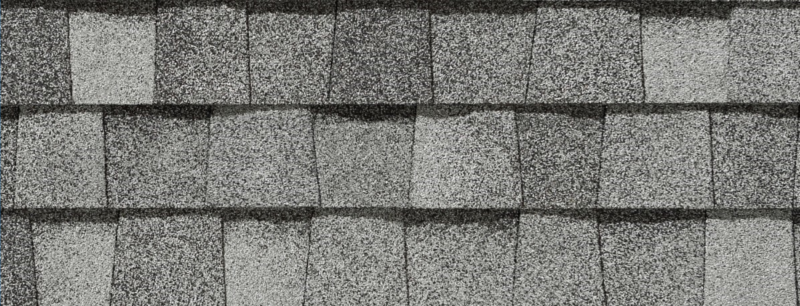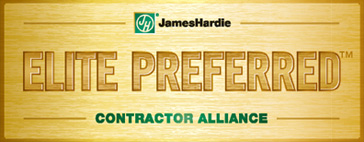Greater Seattle Roofing Shingle & Re-Roofing FAQ’s
Are your shingles long-lasting?
Shingles are extremely durable and hardy roofing materials. CertainTeed™ shingles are considered by many to be the premier shingles in the industry. In fact, less than 1% of all CertainTeed shingles are found to have manufacturing defects. But they do age as with any other product. Our shingle repair and reroofing services in Seattle can help combat these ageing effects.

How soon will I notice the maturity of the shingles?
Signs of aging within a short time after installation of your new roof system are not unusual to find—sometimes even within the first year. As a homeowner, you want to know whether the symptoms you see are precursors of premature failure or simply a natural part of the aging process.
How does the climate change your roof?
Consider the conditions your roof must endure where you live. First, there is the intense heat of the sun, which scorches the surface of the roof and raises rooftop temperatures 50–75 degrees F° above current ambient outdoor temperature. The sun’s rays are relentless, especially during the early afternoon hours. In addition to heat, the sun is the source of ultraviolet radiation, which has been found to degrade and accelerate the aging of the asphalt layers of the shingle. If not for the protective layer of colored granules, roofing shingles would fail very quickly. Other factors such as moisture, pollution, and physical effects (roof traffic, hail, snow loads, tree limbs, etc.) all contribute to the aging and degradation of your roofing shingles.
Seasonal and weather changes also play a role in the aging of asphalt roofing shingles. For example, consider the common situation in which the roof is bathed in the intense heat of the summer sun. On such a day, the rooftop may reach temperatures in excess of 160 degrees. Now imagine a cold front sweeping through the area, bringing with it the violent thunderstorms that are a common occurrence in most regions during the sweltering days of summer. Almost instantaneously, the rooftop temperature drops 60–100 degrees as it’s pounded with a summer shower. Thermal shocks such as this cause the roof deck beneath to expand and contract rapidly, placing a strain on the shingles. Year after year this process is repeated, resulting in cyclic fatigue of the shingles.
In addition to all of the climatic and external variables that can impact the performance of your roof, consider the internal factors that negatively influence the performance of roofing shingles. Research has confirmed that an improperly ventilated air space inhibits air movement and, under most circumstances, increases moisture content in comparison with properly vented attic air spaces. Heat shortens the shingles’ life and moisture causes deck movement and/or deterioration, which ultimately affects the performance of shingles.
As you can see, the roofing environment is a hostile one with many factors influencing the longevity of your roofing shingles. The natural aging occurs every day the shingles are exposed to the elements—sun, rain, heat, and cold. Your roof never experiences a “good” day.
How do shingles mature? What will my shingles look like as they age?
Curling: As the asphalt hardens over time, the granules which were once securely embedded begin to break away. Occasionally, you may have seen the colored granules in your gutters. Also, as this hardening advances, the asphalt layers begin to shrink. Of course, all of this is occurring at a microscopic level and is not something which will be noticeable on a daily basis. As the asphalt layer shrinks, it is being countered by the shingle reinforcement, which resists shrinking. We now have a situation in which the top and bottom coatings are shrinking and the reinforcement is remaining stable. As a result, the edges of the shingle may begin to curl over time.
Surface Cracking: Another manifestation of the normal aging process may be the development of surface cracks. For example, as the oils that allow flexibility of the asphalt are depleted due to years of excessive heat, the shingle becomes more brittle, to the point where surface cracking may appear. The stresses created by thermal shock and the movement of the roof deck also increase the likelihood of surface cracking.
Blisters: During the course of natural weathering, small bubble-like raised areas known as blisters may appear on the surface of the shingles. The blisters may be small and pea-sized or as large as a quarter. The blisters may be open, exposing the asphalt, or closed. Blisters frequently result when minimum ventilation requirements are not met.
Staining: Finally, over a period of time, shingles may develop dark brown or black streaks that are sometimes mistaken for soot, dirt, moss, or tree droppings. In actuality, this discoloration may be caused by algae discoloration, it is most readily visible on white or light-colored shingles.

The Life Cycle of a Roofing Shingle
When your new roof was installed, friends and neighbors may have remarked how it enhanced the beauty of your home. However, research indicates that aging begins soon after the shingles are installed and progresses rapidly during the initial curing phase of its life cycle. During this stage, granule loss may occur, small blisters may develop, or the shingles may curl slightly at their edges. You may even notice that this curling is more pronounced during cold weather and the shingles may lie flat as temperatures rise. The good news, however, is that after this curing stage the shingles enter a long period of slow aging, which lasts for the major portion of the shingles’ natural life.
During the “mid-life” period, aging continues at a much slower rate. The cracking or granule loss still occurs but does not increase at a noticeable rate. Only after a long period of “mid-life” does the aging process begin to accelerate once again as the shingles enter their declining years. It’s during this period that homeowners normally think about replacing their roofs.
Your roof is an important investment, since it literally protects you from the elements. While there are no magical creams or ointments to prevent your roof from aging, investing a small amount of time to examine your roof can reduce your anxiety and concerns about the normal aging conditions that affect it. Side-Pro is here to help when your roof does need shingle replacement or reroofing in the Seattle area.
How can you tell if you have bad material (material defects)?
Cracking through reinforcement: Depending upon the style of shingle, the normal weathering characteristics described earlier may be a sign of more serious problems. For example, cracks across a typical three-tab shingle may be a sign of a weak reinforcement. This type of cracking threatens the waterproofing integrity of the roof and needs to be addressed immediately. For the appliqué-style shingle, on the other hand, cracks that are restricted to the unreinforced decorative appliqué are the result of normal weathering and do not compromise the long-term performance of the roof system.
Granule loss exposing asphalt: Large areas of granule loss that expose the underlying asphalt place the shingle at risk of premature failure because UV rays can now get to the asphalt layer. In situations in which hail has knocked off large areas of granules, you can expect the life of your shingles to be appreciably reduced due to the effects of ultraviolet radiation from the sun. Shingles with open blisters in which the asphalt becomes visible are also at greater risk for premature failure. These are all signs that you might need reroofing or shingle replacement in Seattle.







